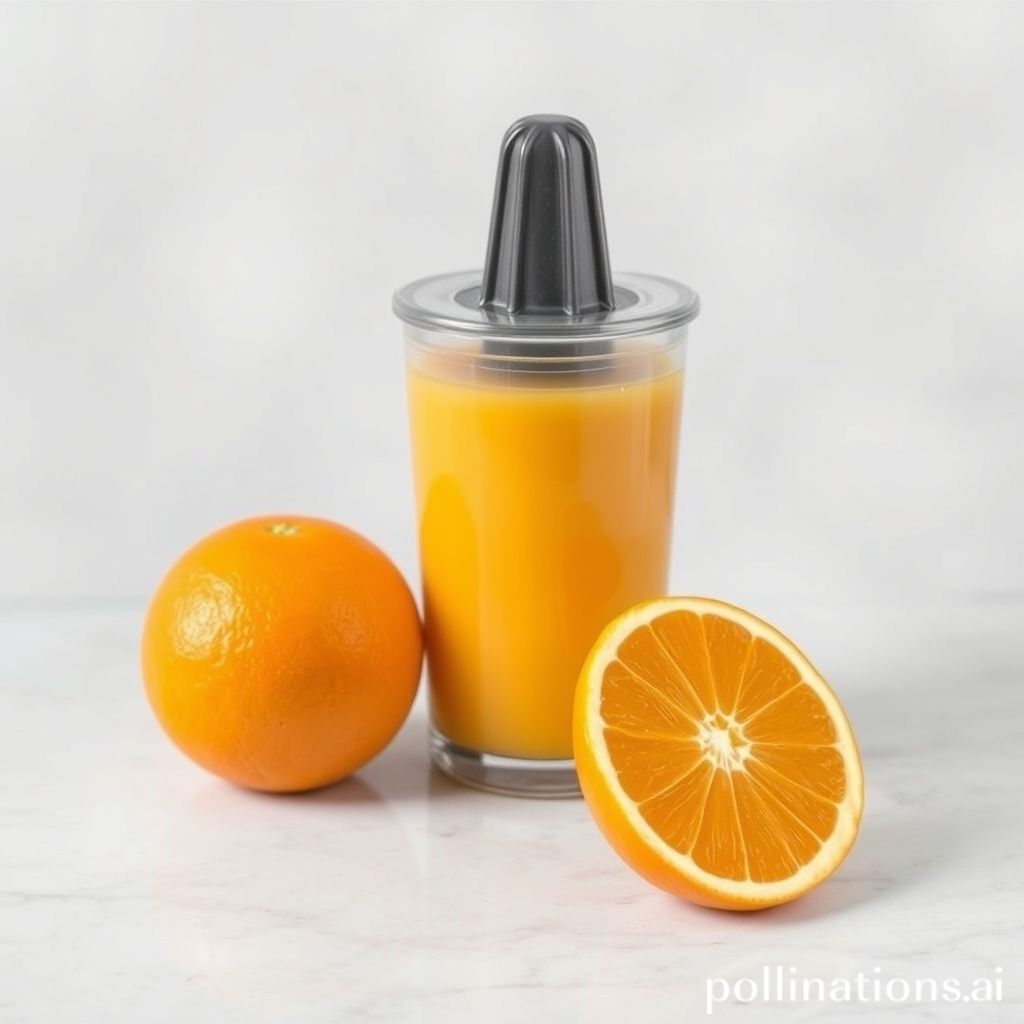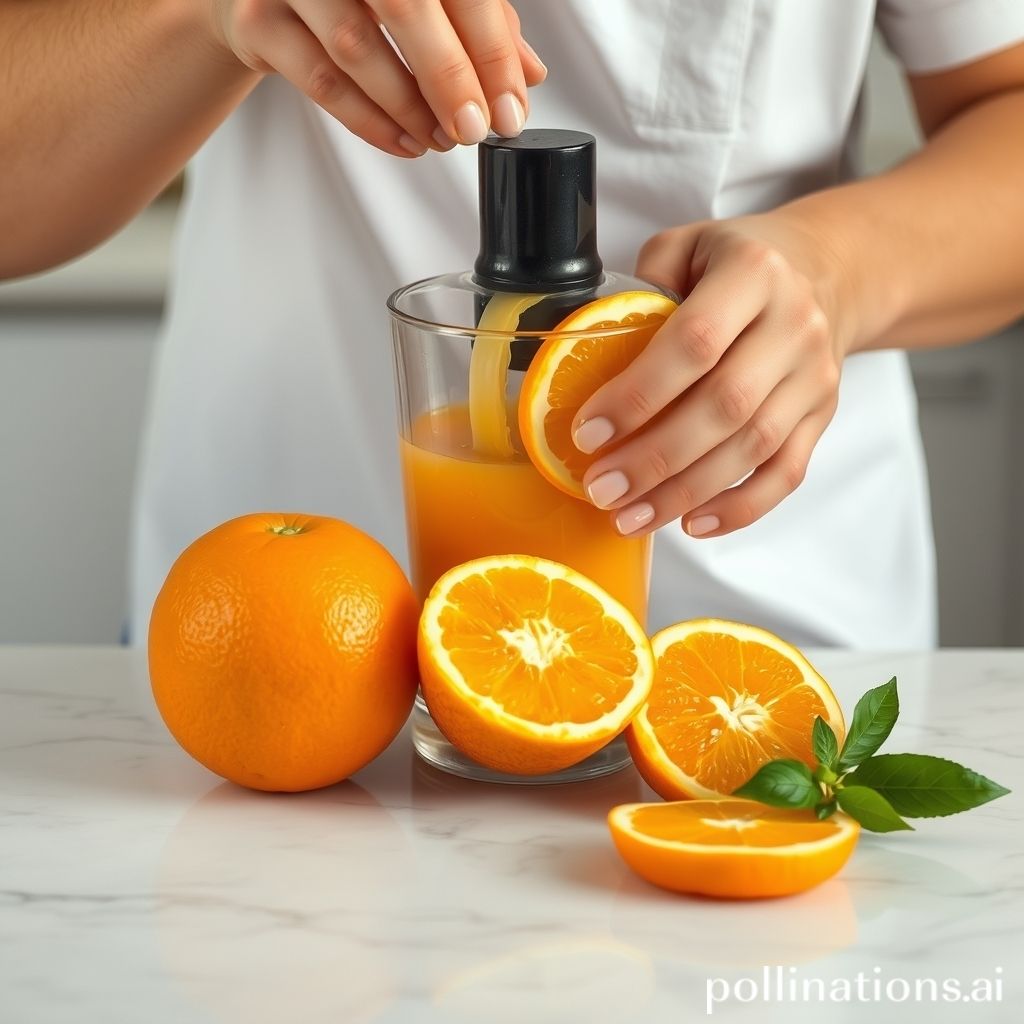Fresh and Tangy: A Step-by-Step Guide to Making Orange Juice with a Juicer
Smoothies isn’t just about blending fruits and veggies together — it’s about creating a delicious and nutritious drink to enjoy. Like a burst of flavor, you can customize your smoothie to suit your taste preferences and dietary needs.
Whether you’re a fitness enthusiast looking for a post-workout boost or simply seeking a refreshing treat, smoothies offer a world of possibilities. In this guide, we will explore different smoothie recipes, ingredients, and techniques to help you create the perfect drink every time. Get ready to embark on a smoothie adventure and discover the endless combinations that will tantalize your taste buds.

Table of Contents
Gathering the Necessary Ingredients and Equipment
1. Fresh Oranges
To make the best orange juice, start by choosing ripe and juicy oranges. Look for oranges that are firm, brightly colored, and heavy for their size. It’s recommended to use organic oranges, as they are free from pesticides and other chemicals.
2. Juicer
An essential tool for making orange juice is a juicer. There are different types available, such as centrifugal juicers and masticating juicers. Choose one that suits your needs and budget.
3. Cutting Board
Use a cutting board made of bamboo or plastic to provide a stable surface for cutting the oranges. This helps prevent the transfer of flavors and odors.
4. Knife
You’ll need a sharp knife to cut the oranges into halves or quarters, depending on the juicer’s feeding tube size. A serrated knife works well for piercing through the orange’s skin.
5. Strainer
Use a fine-mesh strainer or cheesecloth to remove any pulp or seeds from the freshly squeezed orange juice. This will give you a smooth consistency.
6. Pitcher or Glass
Prepare a pitcher or glass to collect the freshly squeezed orange juice. Make sure it can hold the desired amount of juice.
By gathering these necessary ingredients and equipment, you are now ready to move on to the next steps in making delicious and refreshing orange juice using a juicer.
Expert Tips: Choose ripe, organic oranges. Use a sharp knife & a fine-mesh strainer for smooth juice. Find a juicer that fits your needs & budget.Preparing the Oranges
1. Wash the oranges
To make orange juice with a juicer, start by thoroughly washing the oranges. This will remove any dirt, bacteria, or pesticides on the surface. Simply place the oranges under running water and gently rub them to clean.
2. Cut the oranges in half
After washing, use a clean and sharp knife to carefully cut each orange in half. This will make it easier to extract the juice using the juicer.
3. Remove any seeds
Once the oranges are cut in half, check each segment for seeds. Remove any seeds you find, as they can affect the texture and taste of the juice. You can use your fingers or a small spoon to scoop out the seeds.
| Step | Description |
|---|---|
| 1. | Wash the oranges under running water to remove any dirt, bacteria, or pesticides. |
| 2. | Cut the oranges in half using a sharp knife to make it easier to extract the juice. |
| 3. | Remove any seeds from the orange segments using your fingers or a small spoon. |
Remember, the quality of the oranges and the juicer you use can also affect the taste and texture of the juice. So, choose ripe and juicy oranges and use a high-quality juicer for the best results in making orange juice.
Juicing Oranges: A Step-by-Step Guide
1. Set up your juicer
Before you begin juicing oranges, it’s essential to properly set up your juicer. Follow these steps:
- Read the instruction manual to familiarize yourself with your juicer’s features and functions.
- Ensure that all juicer parts are clean and correctly assembled.
- Position a sturdy container, like a pitcher or glass, beneath the juicer’s spout to collect the juice.
2. Prepare and position the oranges
With your juicer set up, it’s time to prepare the oranges and position them for juicing:
- Select ripe and juicy oranges for the best flavor and yield.
- Thoroughly wash the oranges to remove any dirt or residue.
- Cut each orange in half using a sharp knife, ensuring equal halves.
- Hold an orange half firmly and place it on the juicer’s feeding chute, cut side facing down.
- Repeat for the remaining orange halves, adjusting their position as needed.
3. Start juicing the oranges
With the oranges in place, it’s time to begin juicing:
- Turn on the juicer using the power button or switch.
- Gently but firmly press the oranges down onto the juicer’s feeding chute using the juicer’s plunger or your hand.
- Apply consistent pressure to extract the juice, ensuring it flows into the container beneath the spout.
- Continue pressing the oranges until all the juice has been extracted.
4. Collect the juice
As the juicer extracts the juice, it will flow into the container you positioned earlier:
- Monitor the collection container as it fills up with juice.
- Pause the juicing process when the container is nearly full, and transfer the juice to a larger pitcher or individual glasses if needed.
- Resume juicing until all the oranges have been processed and you have obtained the desired amount of juice.

Straining the Juice
After juicing the oranges, it is important to strain the juice to remove any pulp or seeds. This will ensure a smooth and pulp-free orange juice that is enjoyable to drink. Here are the steps to strain the juice:
1. Pour the Juice through a Strainer
To strain the juice, place a strainer over a container or pitcher. Slowly pour the freshly squeezed orange juice through the strainer, allowing it to flow into the container below. The strainer will catch any larger pulp or seeds, preventing them from entering the juice.
2. Extract More Juice with a Spoon
After pouring the juice through the strainer, you may notice some pulp remaining in the strainer. To get every last drop of juice, use a spoon to press down on the pulp. Apply gentle pressure and move the spoon in a circular motion to extract the juice trapped within the pulp. This method helps maximize the juice yield and ensures you get the most out of your oranges.
By straining the juice and using a spoon to extract more juice from the pulp, you can enjoy a smooth and refreshing glass of freshly squeezed orange juice. Remember to clean the strainer and wash the spoon after use for future juicing sessions.
| Information |
|---|
| Straining the juice removes pulp and seeds, resulting in a smooth orange juice. |
| Using a spoon to press down on the pulp helps extract more juice from it. |
| Straining and extracting juice with a spoon maximizes the juice yield. |
Serving and Enjoying Orange Juice
1. Pouring the Strained Juice into a Glass
After successfully extracting the orange juice using a juicer, it’s time to serve it in a glass. Choose a clean and clear glass that can hold the desired amount of juice. Position the glass under the juicer’s spout or use a container to transfer the juice if needed. Make sure to pour the juice slowly and steadily to prevent spills or wastage.
2. Adding Ice if Desired
If you prefer your orange juice chilled, you can enhance your drinking experience by adding ice cubes. Once the juice is in the glass, carefully place a few ice cubes on top. Let the ice gradually cool down the juice without diluting its natural flavors. Remember to adjust the amount of ice if you are using a small glass to prevent overflow.
3. Stirring and Tasting the Juice
Before enjoying your freshly made orange juice, give it a gentle stir to evenly distribute any pulp and combine the juice with any added ice. Take a small sip to taste the refreshing burst of citrus flavors. If desired, you can sweeten the juice slightly by adding a touch of sugar or honey. Nevertheless, many people prefer the natural tanginess of fresh orange juice without any additional sweeteners.
Conclusion
Making orange juice with a juicer is a simple and efficient process. By conforming to the step-by-step instructions provided in this article, you can easily extract the delicious and nutritious juice from fresh oranges.
Remember to choose ripe and juicy oranges for the best flavor and yield. Additionally, experimenting with different juicer settings and techniques can help you achieve the desired consistency and taste. With these tips and tricks, you’ll be able to enjoy a refreshing glass of homemade orange juice anytime you want. Cheers to your juicing success!
Frequently Asked Questions about Making Orange Juice with a Juicer
FAQ 1: How long does freshly squeezed orange juice last?
Freshly squeezed orange juice can generally last for up to 2-3 days when stored properly in the refrigerator. It is recommended to consume it as soon as possible to enjoy its freshness and nutritional benefits.
FAQ 2: Can I store orange juice in the refrigerator?
Yes, you can store orange juice in the refrigerator to maintain its freshness and extend its shelf life. Make sure to store it in an airtight container or bottle to prevent it from absorbing any odors and flavors from other foods.
FAQ 3: Can I use a blender instead of a juicer?
At the same time a juicer is specifically designed to extract juice from fruits, a blender can also be used to make orange juice. Although, keep in mind that using a blender may result in a slightly pulpy texture, as the blender does not separate the juice from the pulp like a juicer does.
FAQ 4: Should I peel the oranges before juicing them?
Yes, it is recommended to peel the oranges before juicing them. The peel contains oils and compounds that can affect the taste and texture of the juice. Removing the peel will result in a smoother and more enjoyable orange juice.
FAQ 5: Can I add other fruits or ingredients to the orange juice?
Absolutely! You can enhance the flavor and nutritional value of your orange juice by adding other fruits or ingredients. Popular additions include strawberries, pineapples, and ginger. Experiment with different combinations to find your favorite blend.
Read Similar Post:
1. Potential Negative Effects of Drinking Orange Juice at Night: Exploring Sleep Disruption and Indigestion
2. Can Orange Juice Discolor Teeth? Find Out the Truth About Dental Staining

